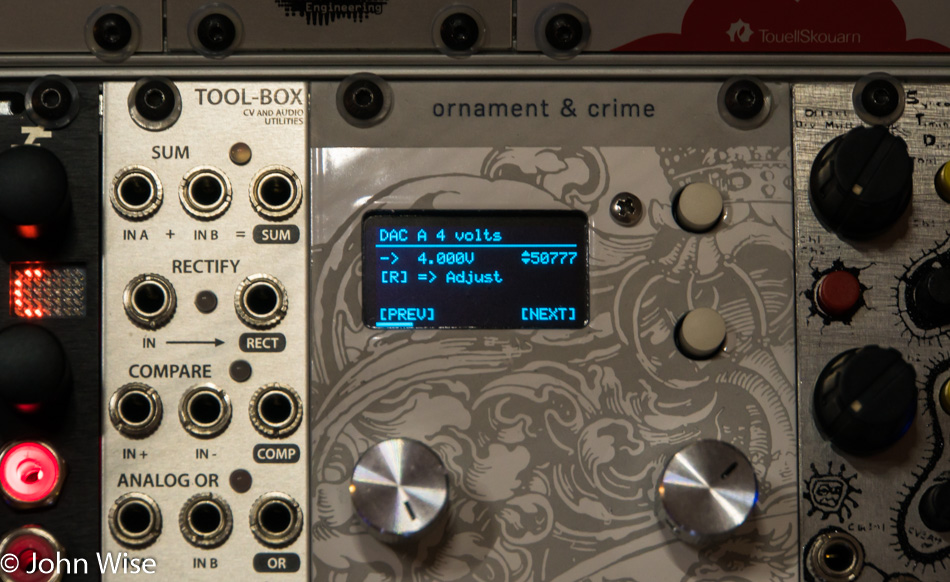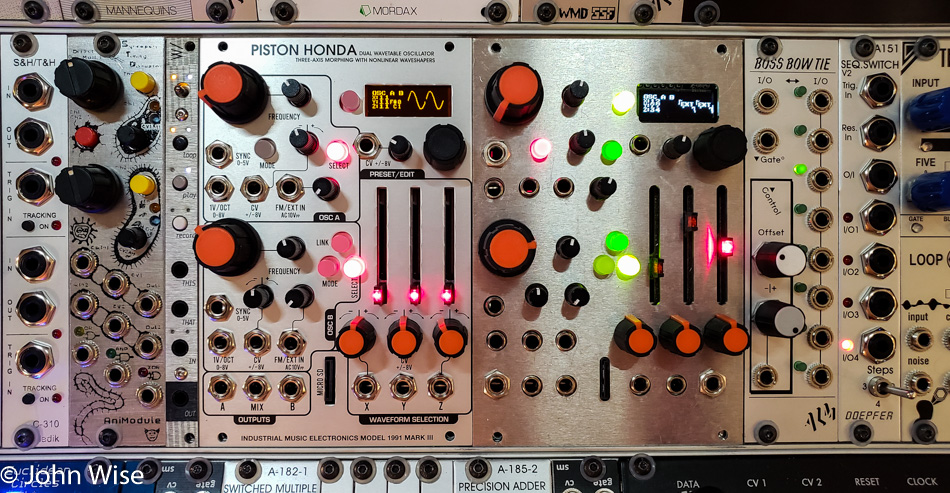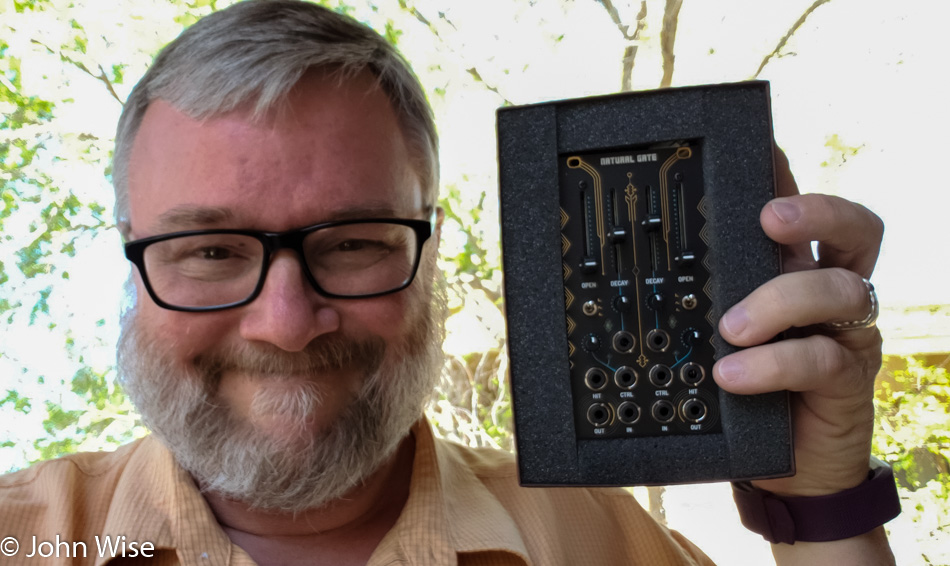
The pain of learning something complex is exacerbated by the risk of exposing oneself to the perceived notion that ridicule could be an outcome of accomplishing anything less than perfection. This dilemma and fear of allowing others to see your incompetence as you struggle forward are real and unfortunate.
I have endeavored for more than a year to learn about making electronic music on an incredibly deep and complex machine where I’m confronted with difficulty every time I turn it on. For example, just last night, I spent a couple of hours trying to calibrate my Ornament & Crime modules. While I’ve had these for quite some time, it has not been necessary prior to now to have them properly calibrated.
As a matter of fact, it was not my intention to even start that process last night; I was simply looking for the instructions on how to change the time until the screensaver kicked in because one of the units was set to 15 seconds, and the other 25 seconds(?). So I set them both to 30 seconds, but while I was on the instruction page, I saw the information regarding calibration. I didn’t build these modules (they are DIY units), so I figured the two guys who built them surely calibrated them before they shipped them to me. They may have, but as I would come to learn, other factors can interfere with how accurately they are calibrated.
On my first pass, I had to contend with the fact that my Mordax Data Oscilloscope only reads out two decimals of accuracy, and the instructions were telling me to take it to four decimals. I started the process and decided to get as close as possible. After finishing the second unit, I glanced over the instructions again, but this time, I saw that it clearly says that as you go from, say, 3.99 to 4.00 volts, there could be a flicker of the numbers; rotate the dial just until the flicker stops, and you’ll probably be extremely close to 4.0000V, and so I started over and readjusted my calibration. For the calibration point around 0.0000V, as soon as I got to -0.00, I adjusted the encoder until I had a solid -0.00V without flicker.
Mostly done with the second unit and my eyes straining in the poor light, I turned on two LED USB lamps that are mounted directly in my Eurorack case. They each have 10 LEDs, so I get some great bright light on my instrument. There’s a problem, though: as I turned on the lights, the calibrated voltage shifted. I turned off the lights, and the voltage returned to near-perfect calibration. Turned them back on, and sure enough, I was seeing a shift in voltage that would have a small, maybe imperceptible impact on the notes being sent out of this module.
Lucky me, I was also starting to think about that -0.00V reading and got to wondering if there wasn’t a point between the negative zero and positive zero. Seeing I was going to start over again anyway, I sent directly to the zero reading, and sure enough, there were quite a few turns of the encoder before I got to the point where the readout was flickering between -0.00V and 0.00V. Once the minus sign stopped flickering on and off, I figured that I had a near-perfect zero voltage point. With that, I had to calibrate these units one more time.
This issue arose because I finally took time to look for something in the manual, and upon finding one thing, I casually and not very accurately read another and because I didn’t even try to be meticulous in the slightest, I moved forward without enough information to do things right the first or second time.
Now, finally, we get to the gist of why I started this blog entry. Eurorack synths, foreign languages, electrical engineering, coding for things like deep learning and complex network systems, and a host of other non-intuitive endeavors/hobbies can tax our faculties and make us scratch our heads about why we sought out something that at times feels impossible to excel at.
Our egos at these weak points ravage us with uncertainty and can make us not only angry with ourselves, but with others around us. Case in point: forums!
How many of us want to be mad at a thing and its creator because the version we bought is obviously broken? Most often, it is not broken; on the contrary, it is us that is broken. We have been set up by a system that doesn’t have much room for mistakes and failure. You have one chance to win, one chance to get good grades, one chance to get things right, or risk getting fired from your job.
We then apply this to the things that should bring us a sense of personal accomplishment, but our conditioning from a relentless march into incremental, often meaningless rewards is then applied to our passions. From the inability to master difficult situations and complex learning scenarios, we don’t want to risk our egos and allow shame to hammer away at us, so we lash out and blame something or someone else. We are not adulting when this happens. Instead, we go to a forum and rant as a poor exercise in a catharsis that only works to alienate the hostile blowhard who is likely feeding the anxiety of those who would like to help but are put off by the toxic volatility of the poster.
This then begs the question, “So what do we do as a society to correct this broken process?” The answer is too complex and would require another few thousand words to start to offer my thoughts on some of the structural and cultural issues that could be part of our dialog, but this blog entry is already too nerdy and long, so maybe that’s a topic for another day. It’s kind of like starting the calibration process only to recognize there’s more to know, and you’ll just have to do it again and again anyway, so persistence, at least, should be a large part of the key.






